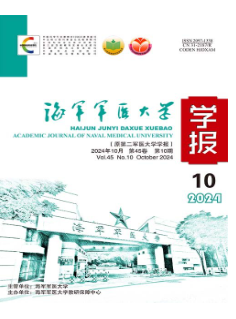Hepatitis B virus mutations during mother-to-children transmission: a preliminary study
Q4 Medicine
引用次数: 0
Abstract
Objective To explore the mutations of hepatocellular carcinoma(HCC)-related hepatitis B virus(HBV)during mother-to-child transmission,so as to provide theoretic evidence for prophylaxis of HCC from the very beginning.Methods A total of 413 HBsAg-positive mothers and their newborns were enrolled in this study.Serum HBV DNA levels in maternal peripheral blood and cord blood of the newborns were measured using real-time quantitative PCR.Nested PCR together with cloning and sequencing methods were applied to examine the HCC-related HBV mutations in the preS and basal core promoter regions of HBV genome.All the newborns received standard HBV vaccination.Of the 413 newborns,104were successfully followed-up 7 months after birth,and the HBV mutations were examined if their circulating HBV DNA was detectable.Results Of the 413 newborns,41(9.9%)had HBV DNA level103 copies/mL in their cord blood.Four(3.8%)of the 104 newborns who were successfully followed up had circulating HBV DNA level103 copies/mL 7months after birth.Compared to mothers without HBV trans-placental transmission,those with HBV trans-placental transmission had no increase in HBV mutations in the basal core promoter region.However,the viral mutations containing T2898G/C,C3000 T,C3116T,T31 C,and T52 Cin the preS region of HBV subgenotype C2 significantly increased the risk of HBV trans-placental transmission(P0.05).The frequencies of the HCC-related mutations in the preS and basal core promoter regions of HBV genome were not significantly different between maternal peripheral blood and the cord blood of the newborns.Importantly,the HCC-related mutations were rarely found in the HBV-positive infants at 7months after birth.Conclusion The HBV mutations in the preS region of HBV subgenotype C2 may affect the trans-placental transmission of HBV.However,the quasispecies of HCC-related HBV mutants have no advantage in causing chronic HBV infection in infants.The HBV mutants which can promote HCC are selected during the long term chronic infection.乙型肝炎病毒在母婴传播中的突变:初步研究
目的探讨肝细胞癌(HCC)相关乙型肝炎病毒(HBV)母婴传播过程中的突变情况,为HCC的早期预防提供理论依据。方法选取413例hbsag阳性母亲及其新生儿为研究对象。采用实时荧光定量PCR检测新生儿外周血和脐带血血清HBV DNA水平。采用巢式PCR、克隆和测序等方法检测HBV基因组前s区和基础核心启动子区与HBV相关的突变。所有新生儿都接受了标准的乙肝疫苗接种。在413名新生儿中,104名在出生后7个月成功随访,并检查其循环HBV DNA是否可检测到HBV突变。结果413例新生儿中41例(9.9%)脐带血HBV DNA水平为103拷贝/mL,4例(3.8%)新生儿出生后7个月外周血HBV DNA水平为103拷贝/mL。与没有HBV经胎盘传播的母亲相比,HBV经胎盘传播的母亲在基础核心启动子区域的HBV突变没有增加。而含有T2898G/C、C3000 T、C3116T、T31 C和T52 Cin的病毒突变在HBV亚基因型C2前s区显著增加了HBV经胎盘传播的风险(P0.05)。母婴外周血和新生儿脐带血HBV基因组前s区和基础核心启动子区hcc相关突变频率无显著差异。重要的是,在出生后7个月的hbv阳性婴儿中很少发现hcc相关突变。结论乙肝病毒C2亚基因型前s区突变可能影响乙肝病毒经胎盘传播。然而,乙肝病毒相关的准种突变体在引起婴儿慢性乙肝病毒感染方面没有优势。在长期的慢性感染过程中,选择了能够促进HCC的HBV突变体。
本文章由计算机程序翻译,如有差异,请以英文原文为准。
求助全文
约1分钟内获得全文
求助全文
来源期刊

海军军医大学学报
Medicine-Medicine (all)
CiteScore
0.50
自引率
0.00%
发文量
14752
期刊介绍:
Founded in 1980, Academic Journal of Second Military Medical University(AJSMMU) is sponsored by Second Military Medical University, a well-known medical university in China. AJSMMU is a peer-reviewed biomedical journal,published in Chinese with English abstracts.The journal aims to showcase outstanding research articles from all areas of biology and medicine,including basic medicine(such as biochemistry, microbiology, molecular biology, genetics, etc.),clinical medicine,public health and epidemiology, military medicine,pharmacology and Traditional Chinese Medicine),to publish significant case report, and to provide both perspectives on personal experiences in medicine and reviews of the current state of biology and medicine.
 求助内容:
求助内容: 应助结果提醒方式:
应助结果提醒方式:


